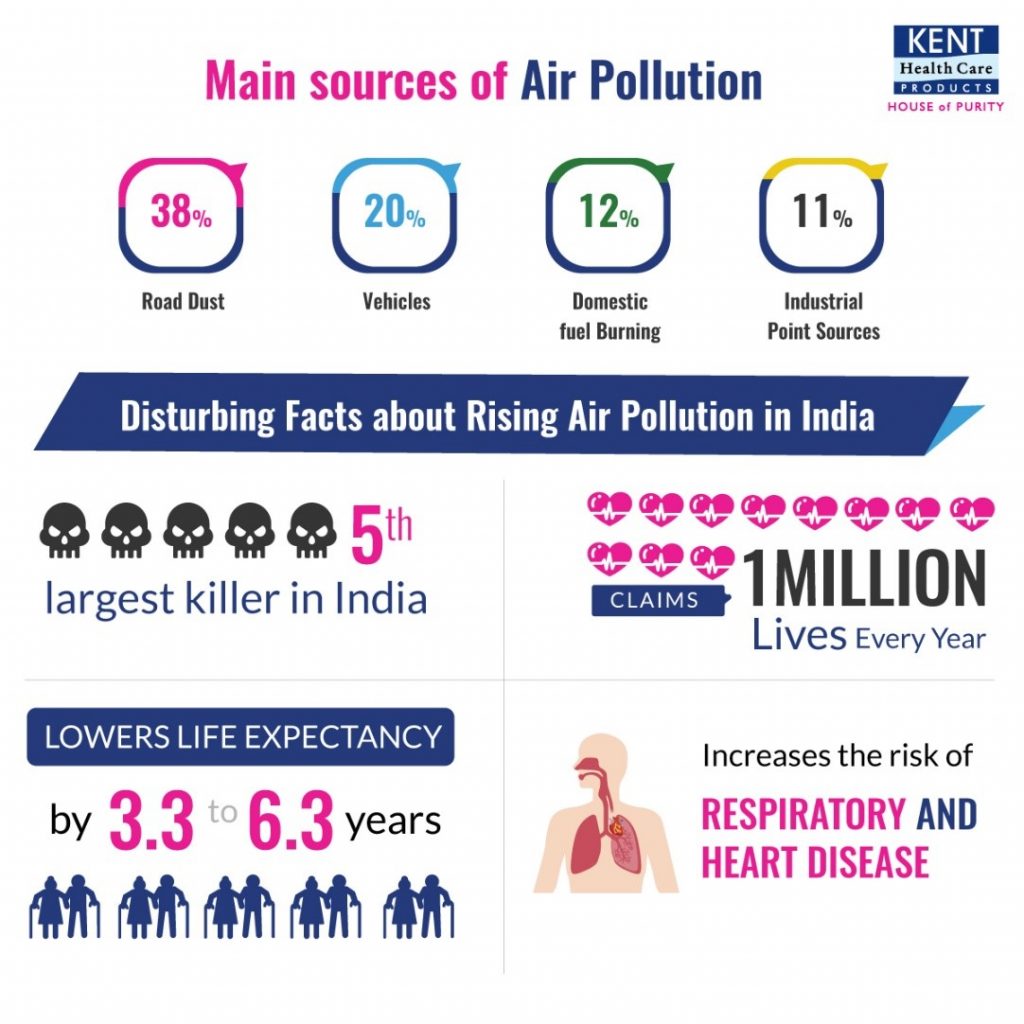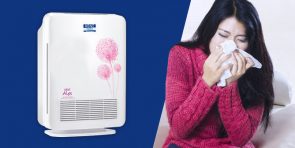Rising Air Pollution – A Serious Concern
The unhealthy air quality is a kind of warning of high-level of air pollution that has gripped the entire nation. The polluted air that you breathe in can lead to a number of health problems. Inhaling of polluted air can lead to severe problems such as asthma, bronchitis, pneumonia, and even chronic lung diseases. Air pollution has become a serious issue for health and the major sources of this issue are the burning of fuel wood and biomass, contaminated fuel, emission of vehicle smoke, and traffic congestion as well. In addition to this, smoke, smog, and even particulate pollution are a few aspects that lead to air contamination.
What are the Consequences of Increasing Air Pollution?
Research conducted by reputed institutes has come up with a statistical report that says road dust causes 38% of air pollution, 20% due to smoke that comes out of the vehicle. 12% of air gets polluted due to domestic fuel burning and the industrial point sources have the remaining 11% of share in polluting the air. The report has claimed that approximately 1 million (10 lakhs) people lose their lives every year due to airborne diseases. Inhaling polluted air increases the risk of respiratory and heart disease, thereby lowering the life expectancy by 3.3 to 6.3 years. This is why air pollution is regarded as the 5th largest killer in India and the high risk of getting affected are mostly the children and senior citizens.
10 facts about air pollution
- Air pollution refers to the presence of harmful substances in the air that can have adverse effects on human health, the environment, and the overall quality of life.
- Both outdoor and indoor air pollution contribute to health problems. Outdoor air pollution is caused by emissions from vehicles, industries, and power plants, while indoor air pollution can result from sources like cooking stoves, tobacco smoke, and household chemicals.
- Particulate matter , such as dust, smoke, and soot, is a common air pollutant. PM can enter the respiratory system and cause respiratory issues, cardiovascular problems, and even premature death.
- Ground-level ozone is another significant air pollutant formed by the interaction of sunlight with pollutants like nitrogen oxides and volatile organic compounds. High levels of ozone can trigger respiratory problems, especially for people with asthma or other respiratory conditions.
- Air pollution can have serious health consequences, including increased risk of respiratory infections, lung cancer, heart disease, stroke, and respiratory diseases such as asthma and chronic obstructive pulmonary disease (COPD).
- Air pollution not only affects human health but also harms the environment. It contributes to climate change, damages ecosystems, depletes ozone in the upper atmosphere, and leads to the loss of biodiversity.
- Certain groups, such as children, the elderly, pregnant women, and individuals with pre-existing health conditions, are more vulnerable to the health effects of air pollution.
- In many countries, air pollution is a major public health concern, prompting the implementation of regulations and policies to reduce emissions and improve air quality.
- Sustainable transportation, clean energy sources, and proper waste management are crucial in mitigating air pollution.
- Monitoring air quality, raising awareness, and adopting individual actions such as reducing vehicle emissions, conserving energy, and promoting green practices can contribute to combating air pollution and creating healthier environments.
How Does Outdoor Pollution Affect Indoor Air Quality?
1. Infiltration of Pollutants:
Outdoor pollutants, such as particulate matter, gases, and volatile organic compounds (VOCs), can infiltrate buildings through open windows, doors, and cracks. These pollutants can then accumulate indoors and degrade indoor air quality.
2. Ventilation System Intake:
Buildings with ventilation systems draw in outdoor air to maintain airflow. If the outdoor air is polluted, the ventilation system can bring those pollutants inside, affecting the overall indoor air quality.
3. Proximity to Pollution Sources:
Buildings located near high-traffic areas, industrial zones, or areas with significant pollution sources are more susceptible to outdoor pollutants entering indoor spaces. Contaminants emitted from nearby sources can easily find their way indoors.
4. Weather Conditions:
Weather conditions like wind patterns and atmospheric stability can influence the transport and dispersion of outdoor pollutants. Certain weather conditions, such as stagnant air or temperature inversions, can trap pollutants near ground level and increase their penetration into indoor spaces.
5. Personal Activities:
Individuals can inadvertently bring outdoor pollutants indoors on their clothing, shoes, or belongings. For example, pollutants from vehicle exhaust or industrial sites can stick to clothing, and when individuals enter indoor spaces, they release those pollutants into the air.
Several studies have also revealed that the rising rate of respiratory ailment is the result of a high level of indoor air pollution, making it essential to install an air cleaner or air purifier. The usage of the polluted air trapping system is added with scrubbing technology that holds the capability to clean the contaminated air and freshen up the room. In this concern, KENT has a range of innovative HEPA Air Purifiers added with excellent purification technology. These products are designed to perfection and are defined to have an excellent filtration process.
You May Also like Reading: Health Hazard Caused By Indoor Air Pollution
What Makes KENT HEPA Air Purifiers Different?
KENT Air Purifier removes 99.9% of pollutants from the air and eliminates dust, bacteria, PM 2.5, odor, and SPM to ensure that you breathe safely. The air purifier uses four stages of filter:
- Pre-filter- removes visible particles from the air,
- An activated carbon filter removes strong odors, foul smells, Volatile Organic Compounds (VOC), and Cigarette smoke.
- Anti-bacterial coated HEPA filter that traps suspended particulate matter (SPM) which are as small as 0.3 microns.
Last Few Words
Considering the increasing amount of air pollution, installing an air purifier is a necessity. The advanced HEPA technology removes contaminants from the indoor air to ensure that you breathe safely. The portable design makes it easy to place the air purifier wherever you need it. To know more about indoor air pollution read our inside story.





